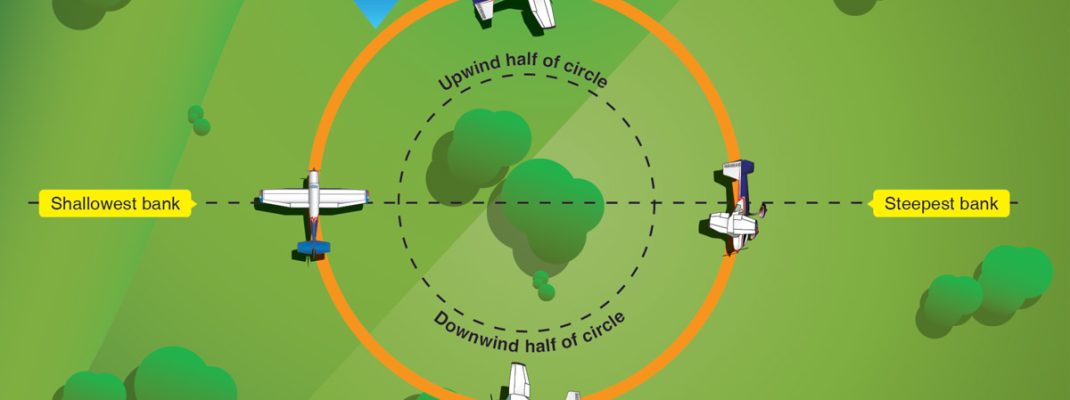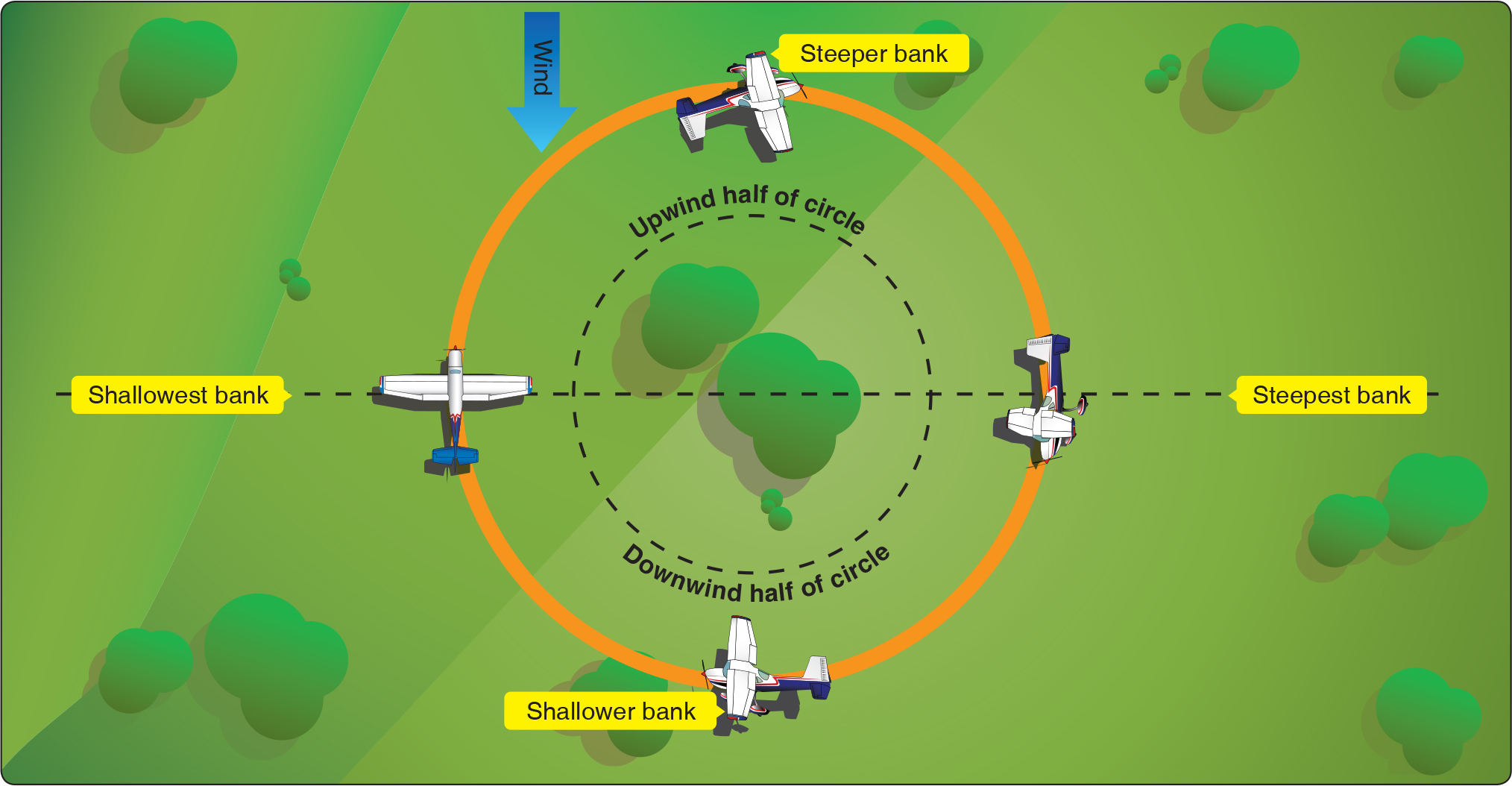Today we’re featuring a follow-up to our recent post on the rectangular course with an excerpt from the Airplane Flying Handbook (FAA-H-8083-3).
Turns around a point are a logical extension of both the rectangular course and S-turns across a road. The maneuver is a 360° constant radius turn around a single ground-based reference point. The principles are the same in any turning ground reference maneuver—higher groundspeeds require steeper banks and slower ground speeds require shallower banks. The objectives of turns around a point are as follows:
- Maintaining a specific relationship between the airplane and the ground.
- Dividing attention between the flightpath, groundbased references, manipulating of the flight controls, and scanning for outside hazards and instrument indications.
- Adjusting the bank angle during turns to correct for groundspeed changes in order to maintain a constant radius turn; steeper bank angles for higher ground speeds, shallow bank angles for slower groundspeeds.
- Improving competency in managing the quickly changing bank angles.
- Establishing and adjusting the wind correction angle in order to maintain the track over the ground.
- Developing the ability to compensate for drift in quickly changing orientations.
- Developing further awareness that the radius of a turn is correlated to the bank angle.
To perform a turn around a point, the pilot must complete at least one 360° turn; however, to properly assess wind direction, velocity, bank required, and other factors related to turns in wind, the pilot should complete two or more turns. As in other ground reference maneuvers, when wind is present, the pilot must a constantly adjust the airplane’s bank and wind correction angle to maintain a constant radius turn around a point. In contrast to the ground reference maneuvers discussed previously in which turns were approximately limited to either 90° or 180°, turns around a point are consecutive 360° turns where, throughout the maneuver, the pilot must constantly adjust the bank angle and the resulting rate of turn in proportion to the groundspeed as the airplane sequences through the various wind directions. The pilot should make these adjustments by applying coordinated aileron and rudder pressure throughout the turn.
When performing a turn around a point, the pilot should select a prominent, ground-based reference that is easily distinguishable yet small enough to present a precise reference. The pilot should enter the maneuver downwind, where the groundspeed is at its fastest, at the appropriate radius of turn and distance from the selected ground-based reference point. In a high-wing airplane, the lowered wing may block the view of the ground reference point, especially in airplanes with side-by-side seating during a left turn (assuming that the pilot is flying from the left seat). To prevent this, the pilot may need to change the maneuvering altitude or the desired turn radius. The pilot should ensure that the reference point is visible at all times throughout the maneuver, even with the wing lowered in a bank.
Upon entering the maneuver, depending on the wind’s speed, it may be necessary to roll into the initial bank at a rapid rate so that the steepest bank is set quickly to prevent the airplane from drifting outside of the desired turn radius. This is best accomplished by repeated practice and assessing the required roll in rate. Thereafter, the pilot should gradually decrease the angle of bank until the airplane is headed directly upwind. As the upwind becomes a crosswind and then a downwind, the pilot should gradually steepen the bank to the steepest angle upon reaching the initial point of entry.
During the downwind half of the turn, the pilot should progressively adjust the airplane’s heading toward the inside of the turn. During the upwind half, the pilot should progressively adjust the airplane’s heading toward the outside of the turn. Recall from the previous discussion on wind correction angle that the airplane’s heading should be ahead of its position over the ground during the downwind half of the turn behind its position during the upwind half. Remember that the goal is to make a constant radius turn over the ground and, because the airplane is flying through a moving air mass, the pilot must constantly adjust the bank angle to achieve this goal.
The following are the most common errors in the performance of turns around a point:
- Failure to adequately clear the area above, below, and on either side of the airplane for safety hazards, initially and throughout the maneuver.
- Failure to establish a constant, level altitude prior to entering the maneuver.
- Failure to maintain altitude during the maneuver.
- Failure to properly assess wind direction.
- Failure to properly execute constant radius turns.
- Failure to manipulate the flight controls in a smooth and continuous manner.
- Failure to establish the appropriate wind correction angle.
- Failure to apply coordinated aileron and rudder pressure, resulting in slips or skids.






